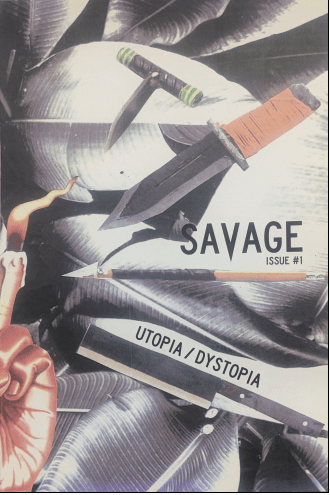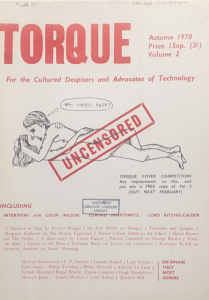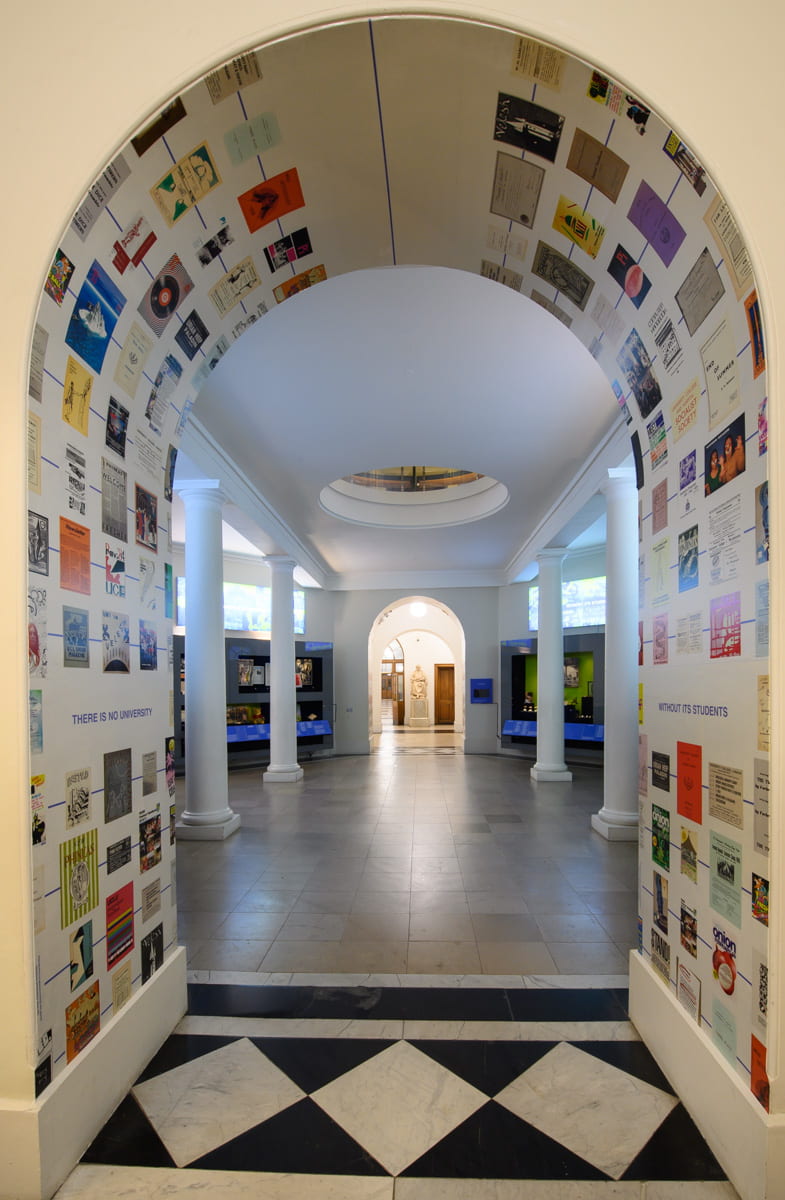UCL’s Student Magazines
By Colin Penman, on 14 February 2024
On a recent (well, November) trip to the USA to see family, I managed to visit ‘All That’s Fit for Student Print’, a fascinating exhibition of student publications at Binghamton University Special Collections, and meet University Archivist Maggie McNeely and her colleagues – should you happen to find yourself in the Southern Tier of New York State, pop in! So, for this ‘UCL birthday’ post, I thought I might highlight our own student publications.
Our student magazines are part of College Collection. This is an unwieldy agglomeration of over 5,000 items related to the history of UCL, and includes monographs, periodicals, ephemera (tickets, programmes, invitations and more), and official publications, such as Calendars and Annual Reports, dating from before UCL’s foundation on 11 February 1826 up to the present day. There are also published lectures, examination papers, prospectuses, and works on the Bloomsbury area of London, as well as the other institutions which form part of the wider University of London.
Magazines in general, and student-focused ones in particular, tend to have a short active life, and are little regarded. You read it, you bin it, you move on – ephemeral indeed. But it’s their transitory quality that gives them such a fascinating afterlife, even in the gaps and silences (there’s usually a reason why we don’t have something), because you get a real snapshot of student life and preoccupations at a specific point in time. And let’s not forget the aesthetic aspect. I love the jaggy design on the cover of Savage (2015 – the only issue we have so far), which fairly hurts the eye:

And you don’t need to be told the dates of these numbers of Pollardian and Torque – everything about them says: it’s the 70s, and nothing but the 70s.


The earliest student magazine that we have is the London University Chronicle, from 1830 – before UCL was UCL – but the main student organ remains Pi, founded in February 1946, and named for the Provost of the time, David Pye. There was a strong feeling that, following the trauma of the war, an effort needed to be made to bring together what was now a highly disparate group of 2,100 individuals (‘the largest single college in the British Empire’) who had been scattered abroad in the armed forces or evacuated with their departments to various parts of England and Wales. There are some echoes there of the shock of Covid – a large body of students with little or no experience of a real, in-person Bloomsbury community.
Pi was always a campaigning paper, or at least offered a platform to student campaigners, as we can see in these examples from the 1970s and 1980s. In November 1979, the front cover shows a man climbing over security gates, which had just been installed following a series of robberies and sexual assaults – and some fierce student campaigning:

Pi 382, 2 Nov 1979
And wider politics make their presence felt in arguments over student unions as a closed shop, and the relevance of the Miners’ Strike to student life (October 1984):

Pi 453, 1 Oct 1984

Pi 404, 4 Oct 1982, p. 4
As a semi-official voice of the Union, Pi has always reflected student politics and local concerns, such as direct action to get pedestrian crossings installed around campus, and our old favourite, refectory food (price and quality!), but also student involvement in the politics of the wider world, for example the fate of students caught up in the unrest of Eastern Europe, and campaigning on apartheid.
Of course Pi has its more frivolous side, with its fair share of ‘Miss Fresher’ contests or burning questions such as ‘Should College dances have chaperones?’ (yes, really), pop star interviews, and Rag shenanigans (you can find a couple of dedicated rag mags elsewhere in College Collection).
There were other ‘mainstream’ publications before Pi, such as the Union Magazine (1904-1919), University College Magazine (1919-1939), and New Phineas (1939-1956). But for the unexpected, and to get a picture of sometimes niche preoccupations and interests, it’s the smaller-scale efforts that shine. Sportophyte, a magazine of ‘botanical `humour’, was founded in 1910 by none other than Marie Stopes. (College Collection also contains copies of Stopes’s Married Love and, unfortunately, her poetry.) Crosswords and Maranatha are Christian publications, and we have one copy of Not the Pakistan Society Magazine:

There are of course party-political publications, most of them fairly short lived, for example Red Dwarf (Labour Club), Blue Dwarf and Tory (Conservatives), and Red Giant (Socialist Society), and departmental ones, which can provide unique information about local goings-on and personalities. I’m a fan of the Library School publication The Crazy World of Arthur Brown (1970), which manages to link the singer of the psychedelic classic ‘Fire’ with Professor Arthur Brown, Director of the Library School and Professor of English:

We love to use this kind of material in our teaching and outreach activities, and you can of course visit us to consult them yourself – a shelfmark search for COLLEGE COLLECTION PERIODICALS on our library catalogue, Explore, will bring up most of the titles, though we are still finding more. And of course many titles have been digitised: see the History of UCL page of our Digital Collections. You can also see many titles in our current exhibition Generation UCL: 200 Years of Student Life in London, in the UCL Octagon until August this year:

We are also very keen to close the many gaps that exist in the collection, so I want to end here with an appeal to anyone who thinks they might have something that’s missing from our current holdings, and might be willing to part with it, to get in touch with us. We’d love to hear from you!
 Close
Close


